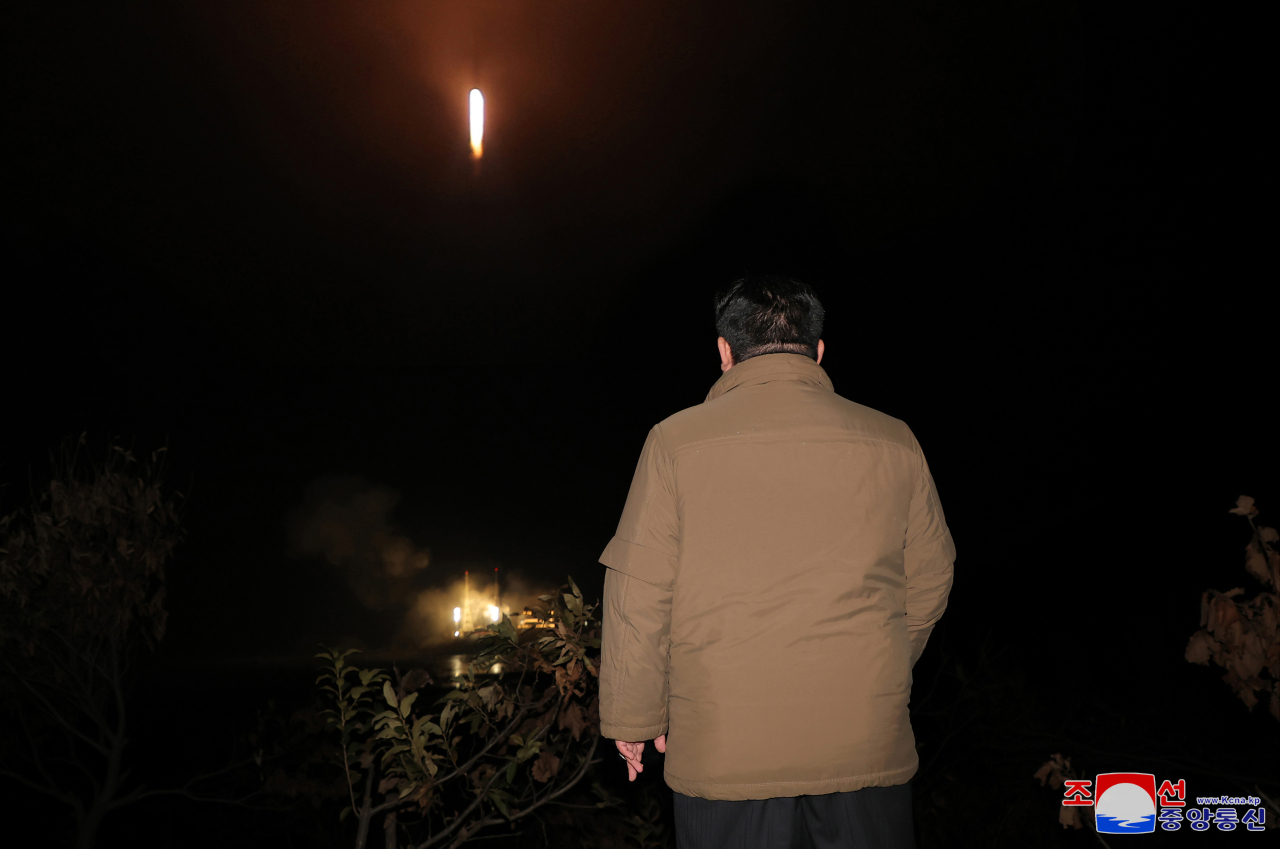[News Focus] Battle beyond border: Koreas square off in space showdown
By Ji Da-gyumPublished : Nov. 23, 2023 - 15:34

A space rivalry between South and North Korea appears to be intensifying, extending the decades-old military confrontation between the two beyond the heavily fortified inter-Korean border on the ground.
North Korea seized the initiative by putting its first-ever military reconnaissance satellite into orbit Tuesday, strategically positioning itself ahead of South Korea's scheduled launch of its first homegrown military spy satellite on Nov. 30.
South Korea's Joint Chiefs of Staff on Wednesday confirmed that the North Korean spy satellite had entered orbit, after two previous failures in May and August. However, it emphasized the need for further analysis to assess its functionality.
Both Koreas, openly labeling each other as adversaries, have so far lacked a functioning military reconnaissance satellite -- a vital component for safeguarding national security.
A spy satellite plays a crucial role in the military's intelligence, surveillance and reconnaissance, or ISR systems, encompassing activities such as monitoring the movements of opposing forces and acquiring imagery of military installations.
What is particularly noteworthy is North Korean state media's announcement on Wednesday, revealing a strategic plan to launch several additional reconnaissance satellites in a short span of time. The development signals the initiation of a competitive phase in the earnest deployment of military spy satellites between the two rivals on the Korean Peninsula, according to local experts.
"To ensure the reliable operation of reconnaissance satellites, a minimum of four to five satellites is generally estimated to be necessary. Therefore, it is expected that there will be at least three to four additional launches by North Korea in the future," said Yang Uk, a research fellow in national security at the Asan Institute for Policy Studies think tank in Seoul.
Yang said the latest launch has paved the way for North Korea to "develop reconnaissance satellites with much larger payloads than existing ones."
Experts also warned that the launch of a spy satellite by a nuclear-armed North Korea heightens the threat of nuclear preemptive strikes faced by South Korea.
With a fully operational military satellite capability, North Korea will gain real-time information on South Korean and US military activities on the peninsula.
"Assuming the success of the recent launch, it is expected to meticulously monitor preemptive strike targets for South Korea and the United States through reconnaissance satellite system and further enhancing the precision strike capabilities of North Korea's tactical nuclear strike units," said Lim Eul-chul, a professor of North Korean studies at Kyungnam University in Seoul.
"This essentially signifies the advancement of preemptive strike capabilities."

Yang also underscored that the military satellite launch empowers Pyongyang to autonomously choose targets for nuclear strikes.
"This development is anticipated to prompt North Korea to articulate a more real-world nuclear strike strategy," Yang said. "The acquisition of a military reconnaissance satellite marks the practical completion of North Korea's nuclear postures."
The South Korean military is also scheduled to launch its first-ever domestically developed spy satellite from the Vandenberg Space Force Base in California. US aerospace giant SpaceX will utilize its Falcon 9 to carry South Korea's spy satellite into orbit.
The impending launch is a crucial component of South Korea's "425 Project," a strategic initiative by the Defense Ministry.
The project is dedicated to "developing and deploying the military's independent reconnaissance satellites through research and development." Its primary objective is to effectively monitor key strategic targets in North Korea and respond promptly to potential threats.
Spy satellites will play a pivotal role as key assets in the first axis of the three-pronged defense system, known as the "Kill Chain" preemptive strike mechanism. By enhancing ISR capabilities, the satellites will enable the South Korean military to effectively monitor areas and strategic targets deep within North Korea.
South Korea's plan is to put five high-resolution spy satellites into orbit by 2025. The inaugural launch will introduce a satellite equipped with Electro-Optical/Infrared or EO/IR sensors, capable of delivering complete situational awareness both day and night.
The remaining four are synthetic aperture radar or SAR satellites, which can provide high-resolution images regardless of the prevailing weather conditions.
A significant distinction exists between the two Koreas in their approach to satellite development. South Korea has strategically leveraged public-private partnerships to advance its space capabilities and emerge as a space power.
In a move to mitigate the surveillance gap and decrease the revisit time of spy satellites to be launched, the South Korean government has chosen to partner with the private sector to develop a system to operate a constellation of microsatellites.
When the five satellites are operational, it is anticipated that specific locations can be observed every two hours on average.
The state-run Agency for Defense Development, Korea Aerospace Industries, along with Hanwha Systems, aims to develop a performance verification microsatellite -- similar to a prototype -- by 2027.
Hanwha Systems also announced Wednesday its plan to launch an independently developed SAR small satellite into space. The launch is set to take place from the southern waters near Jeju Island, with the assistance of the South Korean government, by the end of this year.



















![[Today’s K-pop] Treasure to publish magazine for debut anniversary](http://res.heraldm.com/phpwas/restmb_idxmake.php?idx=642&simg=/content/image/2024/07/26/20240726050551_0.jpg&u=)